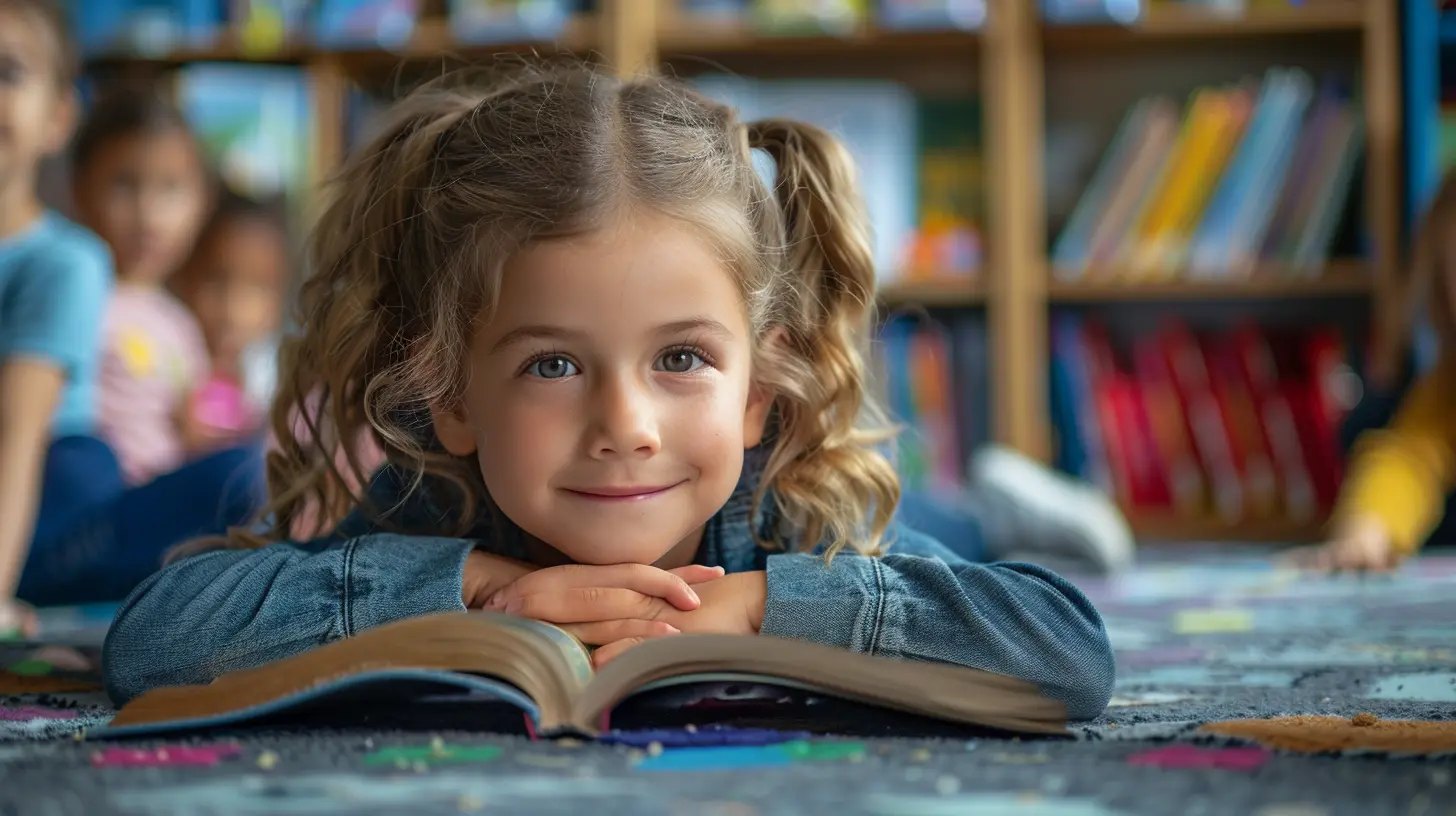The Benefits of Mindfulness Practices in Education
11 June 2025
Let’s face it—school can be a whirlwind. Bells ringing, assignments stacking up, group projects (cue dramatic sigh), not to mention the stress of exams. For students, teachers, parents—even that one overachiever who carries around 12 highlighters—education is no easy ride.
But what if I told you that the key to handling all of this isn’t a new app, another worksheet, or extra tutoring sessions?
What if… it’s just being present?
Yep. Mindfulness. It sounds fluffy, maybe even a bit woo-woo. But hear me out: the benefits of mindfulness practices in education aren't just hype. Backed by science and increasingly embraced by schools around the globe, mindfulness is quickly becoming the "secret sauce" to happier students, more grounded teachers, and classrooms that don’t feel like pressure cookers.
So, grab a cup of tea (or whatever your brain juice of choice is), and let’s dive deep into the perks of adding a little "ommm" to the classroom.
What the Heck Is Mindfulness Anyway?
Before we get into the benefits, let’s clear something up. You might be thinking mindfulness means sitting cross-legged while humming "Ohhhhhm" for hours. Not exactly.Mindfulness is basically the art of paying attention—on purpose—to the present moment without freaking out about it. That’s it. You’re not trying to control your thoughts or become a monk in the Himalayas. You're just noticing. This includes your breath, thoughts, body sensations, and even emotions.
Think of mindfulness like tuning into your internal radio instead of mindlessly flipping through 100 channels with terrible reception.
In an educational setting, it means creating space for students and educators to pause, breathe, and reconnect with what's happening right now. Not what happened last period. Not what’s due tomorrow. Just now.
Why Schools Are Getting on the Mindfulness Train 🚂
You’d be surprised how many schools are jumping aboard the mindfulness express. And there’s a reason for that. Actually, there are several.Let’s break it down.
1. Reduces Stress and Anxiety
Remember when your math teacher gave you a pop quiz and your stomach felt like it was hosting a thunderstorm? Stress and anxiety are real—and they’re on the rise in classrooms.Mindfulness helps put the brakes on that rollercoaster of doom. By teaching students and educators how to breathe, observe their thoughts, and ground themselves, mindfulness lowers cortisol levels (aka the stress hormone), and creates a calm, clear mental environment.
It’s kind of like pressing "Ctrl + Alt + Delete" on your brain when it’s glitching.
2. Boosts Focus and Concentration
Ever tried to read a textbook while your brain is daydreaming about pizza or what’s trending on TikTok? Yeah, doesn’t work so well.Mindfulness practices like meditation and breathing exercises help train the brain to focus better. Think of it as going to the gym—but for your attention span.
And get this: some schools reported a 60% increase in attention span and listening skills after just eight weeks of mindfulness. That's a pretty decent return on barely lifting a finger.
3. Improves Emotional Regulation
We all know that one kid who freaks out when they lose at four square. Or maybe you’ve witnessed a teenager sobbing in the hallway because they got a B+. Emotions are natural—but learning to manage them is key.Practicing mindfulness creates a healthy pause between emotion and reaction. Instead of going full rage mode or curling into a ball of despair, students learn to acknowledge emotions without letting them take the wheel.
Now that’s emotional intelligence 101.
4. Encourages Self-Awareness
Ever hear yourself say: “Why did I do that?” after making a poor decision? That’s because we often act mindlessly.Mindfulness brings awareness to thoughts, actions, and triggers. Students begin to understand themselves better—what makes them anxious, what excites them, what calms them down. That awareness helps them make smarter choices.
Think of it like having a mini-you inside your head with a flashlight guiding the way. Creepy, but helpful.
5. Builds Better Relationships (Seriously!)
Mindful students tend to be kinder, more empathetic, and less reactive. That means fewer fights over pencils and more understanding when someone’s having a rough day.Teachers, too, report feeling more connected to their students after incorporating mindfulness into the day. And when relationships improve, learning becomes a team sport instead of a solo mission.
6. Enhances Academic Performance
Let’s talk grades, because we know that’s where a lot of heads go first. While mindfulness isn’t magic fairy dust that guarantees straight A’s, studies show a definite uptick in academic performance.Why? Because less stress + more focus + emotional regulation = a brain that’s primed to learn.
Basically, it clears out the mental fog and lets students actually hear what's being taught. Who knew paying attention could be so… useful?
7. Supports Mental Health (And That’s a Big Deal)
Mental health used to be the elephant in the classroom. Not anymore (and thank goodness for that).Mindfulness has been shown to reduce symptoms of depression, anxiety, and even ADHD. It gives students simple, yet powerful tools to navigate the stormiest of mental waters.
And let’s not forget the educators—burnout is real. Mindfulness helps teachers manage workloads, reduce anxiety, and stay connected with why they joined the profession in the first place.
How to Bring Mindfulness Into the Classroom Without It Getting Awkward
Okay, so you’re convinced. Mindfulness is great. But how do you actually do it without making everyone feel weird?Glad you asked.
Start Small (Seriously, Tiny)
You don’t need a mindfulness guru or a special room with bean bags and incense (though, hey, if you have that—cool).Start with just 30 seconds of deep breathing at the beginning or end of class. Or try a one-minute body scan where students just notice how they feel, head to toe.
Simple. Non-threatening. Surprisingly effective.
Use Apps and Videos
There are a ton of kid-friendly guided meditations out there. Apps like Headspace, Calm, or Insight Timer have free resources specifically for schools.Bonus: teachers can sneak in a session too when no one’s looking. 😉
Make It Routine
Just like morning announcements or reciting the pledge, mindfulness thrives on routine. Whether it’s post-recess refocus time or "Mindful Monday," consistency makes it normal. Not weird. Not awkward. Just another part of the day.Include Everyone
Mindfulness isn’t just for students with anxiety or teachers on the edge of burnout. It benefits everyone. Incorporate practices into your school’s wellness plan, assemblies, or even parent newsletters. The more people practice it, the more it sticks.Keep It Fun and Lighthearted
Mindfulness doesn’t have to be all serious monk mode. Use props like glitter jars (a visual metaphor for a noisy brain), play "mindful listening" games, or do a “five senses” scavenger hunt.Getting creative with mindfulness keeps it engaging and, dare I say, fun?
Real Talk: What Mindfulness Doesn’t Do
Let’s clear up a few myth-busting facts while we’re at it.Mindfulness doesn't:
- Cure all academic struggles overnight
- Replace therapy or medication
- Instantly make a chaotic classroom peaceful
- Turn teenagers into zen masters (we wish)
But what it does do is create an environment where students and educators feel more equipped to handle the ups and downs of life inside (and outside) the classroom.
Why This Matters More Than Ever
In a post-pandemic world, where mental health is in crisis and schools are dealing with challenges that boggle the mind, we need more than traditional methods. Mindfulness adds a much-needed human touch to education. It reminds us all—students, teachers, parents—that we’re not just test scores and lesson plans.We are human beings. And sometimes, just breathing for a moment can change everything.
Final Thoughts (Deep Breath In… And Out)
So, is mindfulness a magic wand? Nope.But is it a powerful, proven, and practical tool for making education more compassionate, focused, and enjoyable?
Absolutely.
Whether you're a student juggling five classes, a teacher managing 30 wild minds at once, or a parent just trying to survive homework time—you could probably use a little more mindfulness. And the classroom? Well, it might just be the best place to start.
Let’s not just educate minds—let’s nurture them.
all images in this post were generated using AI tools
Category:
Educational PsychologyAuthor:

Eva Barker
Discussion
rate this article
2 comments
Davina Stone
Thank you for this insightful article! It beautifully highlights the transformative power of mindfulness in education. I appreciate how it emphasizes both students' and educators' well-being, fostering a more compassionate and focused learning environment. Truly inspiring and much needed!
June 15, 2025 at 11:15 AM

Eva Barker
Thank you so much for your kind words! I’m glad the article resonated with you and highlighted the importance of mindfulness for both students and educators.
Zephyra Whitaker
Mindfulness in education offers students essential skills for managing stress, improving focus, and enhancing emotional well-being. Integrating these practices can profoundly impact their academic performance and overall development.
June 11, 2025 at 2:53 AM

Eva Barker
Thank you for your insightful comment! I completely agree that mindfulness equips students with vital skills that enhance both their academic and personal growth.


